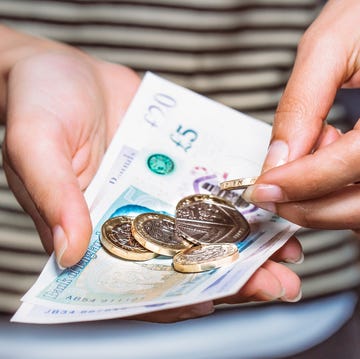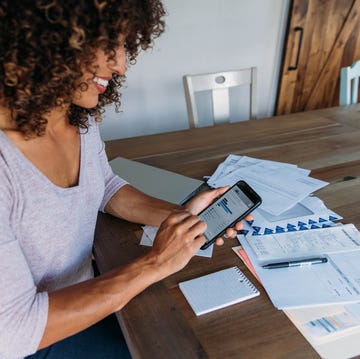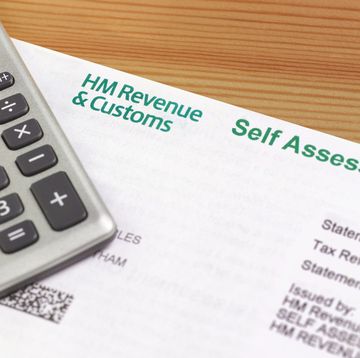So you want to put money away for your children's future but you (and they) want to save the planet at the same time, right?
Research from ethical bank Triodos found 65% of parents want their children’s money to do good for the society and 60% of women said they would move money out of junior ISAs that were having a negative impact on people or the planet.
Younger parents were particularly interested in being green or ethical with money. Over two-thirds (69%) of those aged 18-34 said they want to save with a bank that shared their value.
'Money doesn’t have to be invested in the arms trade, fossil fuels and tobacco – it can be used to do good things that help build the society we want to live in. It is now possible to save or invest into an ISA that works hard for you and at the same time helps finance inspiring organisations,' Bevis Watts, managing director at Triodos Bank UK, explains.
Get started
If you've yet to start saving for your children or don't feel you're focusing on this enough, now is the perfect time to maximise your child’s ISA allowance of £9,000.
Here’s what you need to know:
1. Build a nest egg
Every child can have up to £9,000 placed into a Junior ISA each tax year. That money can then grow tax-free forever – it converts into a standard adult ISA when they turn 18. The best rate currently available on a cash Junior ISA is 2.95% from Coventry Building Society. That’s substantially more than you can get on even the best adult ISAs so there's no better time to plump up the savings of younger family members.
'If you and other family were able to gift a total of £9,000 a year to a child, at a rate of 2.95%, you could give them over £216,000 when they reach 18. Now that’s a gift worth giving!' says Bowes. 'Even a gift of £50 a month could make a big difference to their future, providing them with more than £11,000 when they turn 18.'
If you paid in to a stocks and shares ISA it could potentially deliver much higher return than cash. If you paid in just £20 a week into a junior ISA from birth, it could be worth over £30,000 by the time they are 18 and as much as £70,000 if they leave it till they are 30, according to Wealthify, which recently launched junior ISAs.
'The great thing about investing for children is that you have time on your side to let the stock market work its magic. There'll be some good spells and bad spells along the way, but that eighteen year time horizon gives you plenty of time for your investments to come good,' Moira O’Neill, head of personal finance, Interactive Investor, says.
If your children or grandchildren are over 18, another option is to put money into a Lifetime ISA for them. These are available to anyone aged between 18 and 39. They would need to open the account themselves, but you could pay money into it. Up to £4,000 per tax year can be paid into a Lifetime ISA and they can either withdraw it when they buy their first home or after their 60th birthday. The big benefit of a Lifetime ISA is that the government will add a 25% bonus every year up to the age of 50.
The best rate currently available on a cash Lifetime ISA is 0.85% from Moneybox. If the money isn’t going to be accessed for quite some time an investment Lifetime ISA may offer more risk but better returns.
2. Keep an eye on fees
When you pay into a stocks and shares ISA, there is usually an annual management fee to pay – it’s important you keep an eye on this or it could eat into your savings.
‘Whilst you can sit back and take a long-term view with your investments, you still have to look out for some 'spiders' along the way. The good news is that recent cost disclosure rules require platform providers to disclose all costs and charges to their customers, and illustrations of the ‘effect of charges’. Even then, providers might change their charging structures from time to time. So, once you’ve invested, and even if you don’t plan to make any changes, keep on top of that mail,’ adds Moira.
If you are only investing a small amount (£25 a month or £300 lump sum), avoid flat-fee providers. You should be looking to pay around 0.5% – 1% in fees, so if you are being charged more, consider switching.
3. Be prepared to lock it away
When you put money in to a junior ISAs, whether it’s a cash or a stocks and shares one, it’s worth knowing that the money will belong to your child and only they can access it when they are 18 – and do what they like with it then too.
Hopefully, they will use it to fund living costs at university or towards buying house maybe, but if they decide to splash it all on a fancy holiday then you may not be able to stop them! But don’t let this stop you; install good money habits from a young age.
4. Help with education costs
One of the reasons that the Bank of England has cut its base rate down is to encourage us all to spend our money to help the economy rather than hoard it. One way to do this could be to spend some savings on your children or grandchildren's education – this could be private school fees, extra tuition or summer school.
'Paying school fees is a great thing to do for grandchildren and may be a sensible financial move,' says Lisa Vaughan, a chartered financial planner at Lisa Vaughan Financial Planning. 'The payments could be exempt from inheritance tax if you can comfortably afford them and as long as they’re made out of surplus income and not capital.'
If you'd like more great money content, SIGN UP HERE for our fortnightly Financially Fabulous newsletter!














